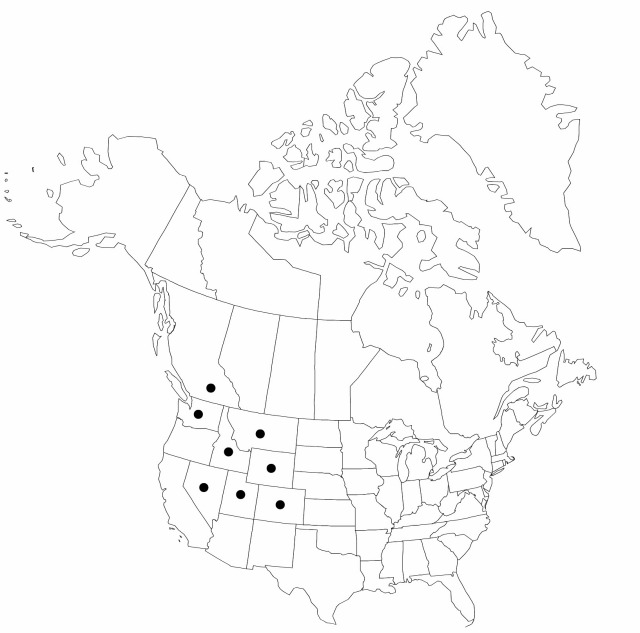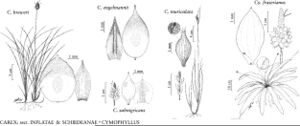Difference between revisions of "Carex engelmannii"
Proc. Amer. Acad. Arts 22: 132. 1887.
FNA>Volume Importer |
FNA>Volume Importer |
(No difference)
| |
Revision as of 19:07, 24 September 2019
Rhizomes 1 mm thick. Culms 7–15 cm, 2–2.5 mm thick at base. Leaves: sheaths to 1.5 cm, fronts uniformly colorless or pale brown; blades with conspicuous median groove, flattened dorsiventrally, elliptic in cross section, 6–15(–18) cm × 0.3–0.6 mm, lacking conspicuous air cavities. Inflorescences 0.7–1.5 cm × 6–8 mm, staminate portion less than 2 mm. Pistillate scales yellow-brown medially, 1-veined, equaling perigynia in length and width, apex acute, involute, appearing acuminate, awns absent. Anthers 1.5–2 mm. Perigynia veinless, sessile, elliptic, 3.5–5 × 1.5–2.5 mm, base rounded, apex acute; beak erose; rachilla longer than fruit. Stigma 1.5–2.5 mm. Achenes stalked to 0.2 mm.
Phenology: Fruiting Sep.
Habitat: Dry rocky slopes, alpine tundra
Elevation: above 2300 m in Cascades and 3000 m in Rockies
Distribution

B.C., Colo., Idaho, Mont., Nev., Utah, Wash., Wyo.
Discussion
Carex engelmannii occurs north and east of the range of C. breweri; both species occur on Mt. Adams, Washington. Carex engelmannii is most similar to C. subnigricans. It differs in the inrolled scale margins, the larger, sessile perigynia, the stipitate achene, and leaf cross sectional shape. It occurs in drier habitats usually to the north and east of the range of C. subnigricans. Relationships among the three species placed in the section, as well as their relationships to other unispicate sections, should be studied further.
Selected References
None.
